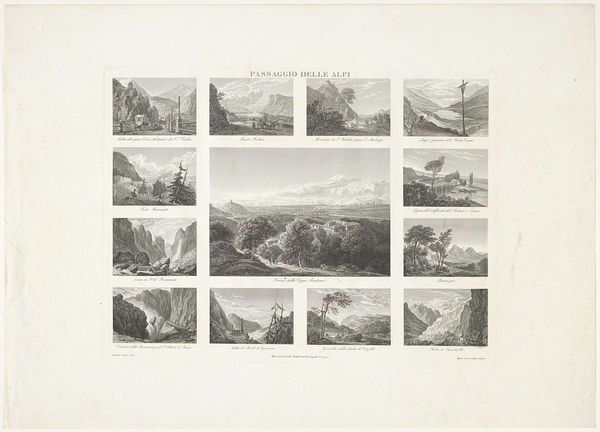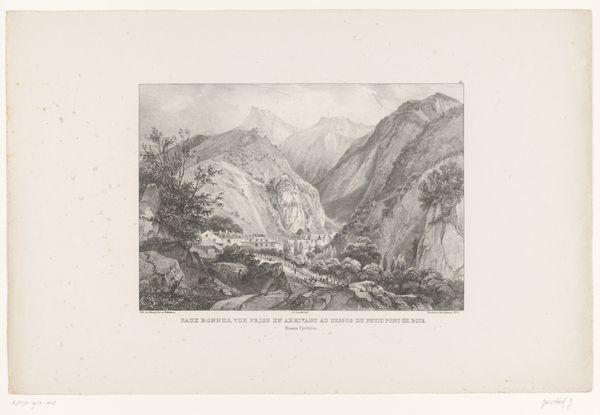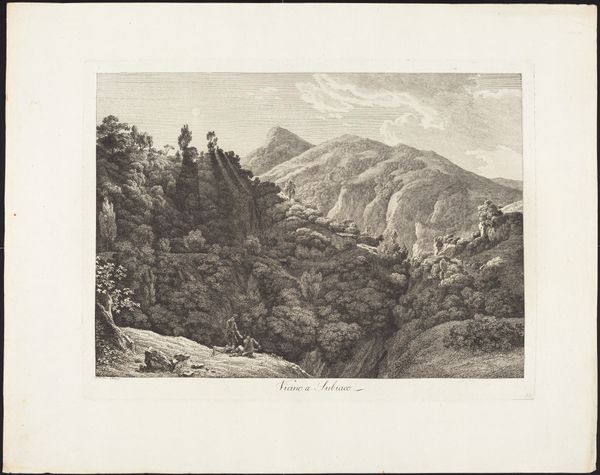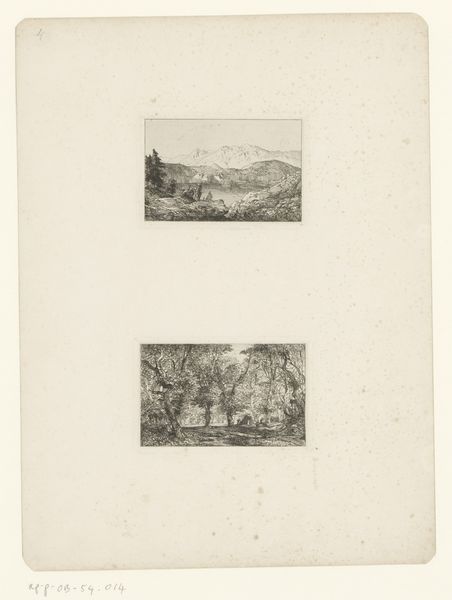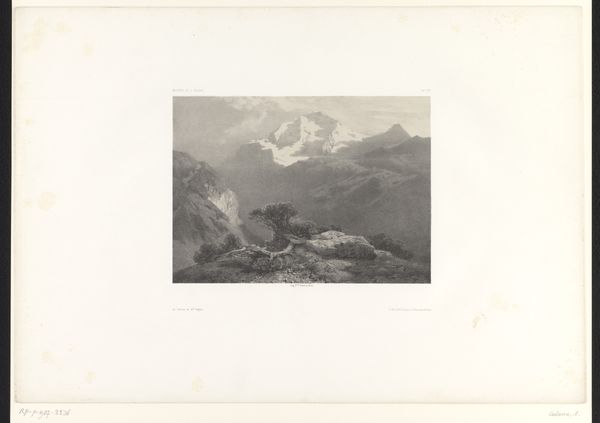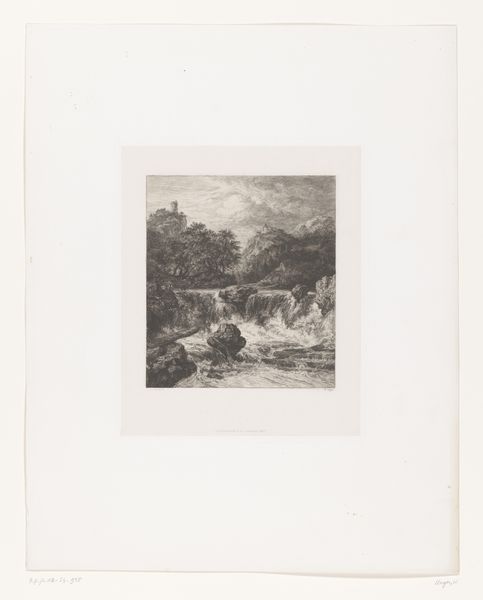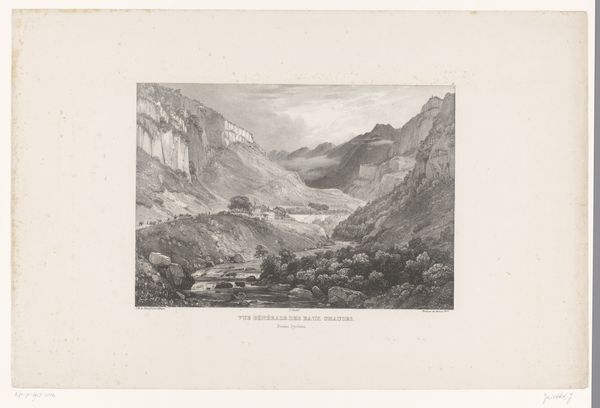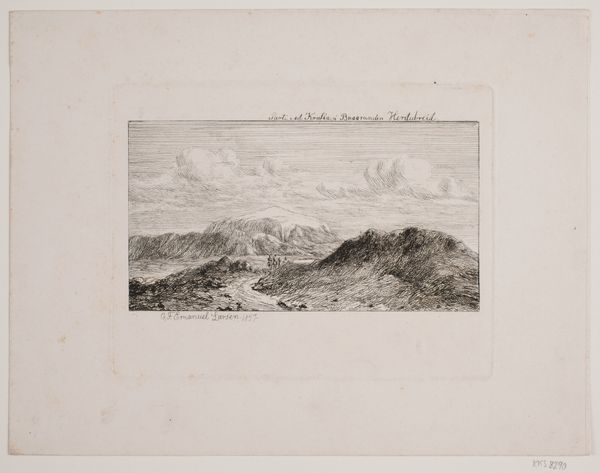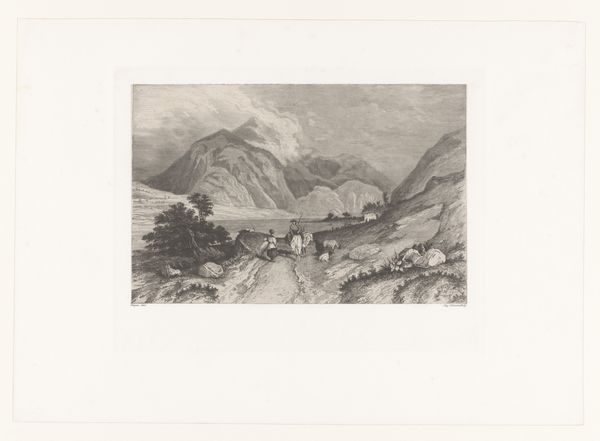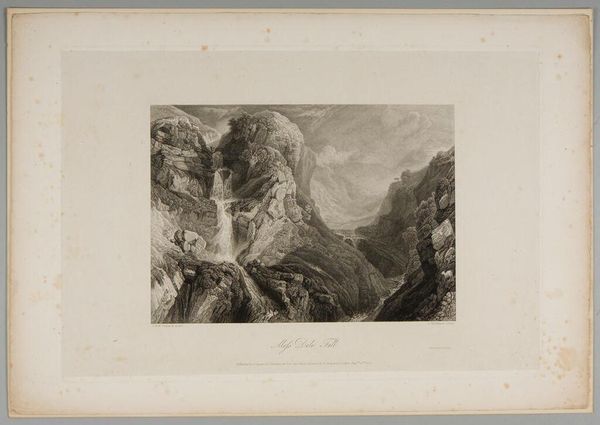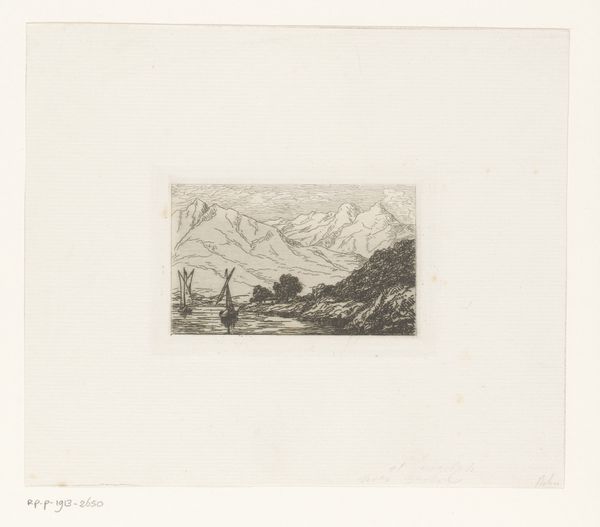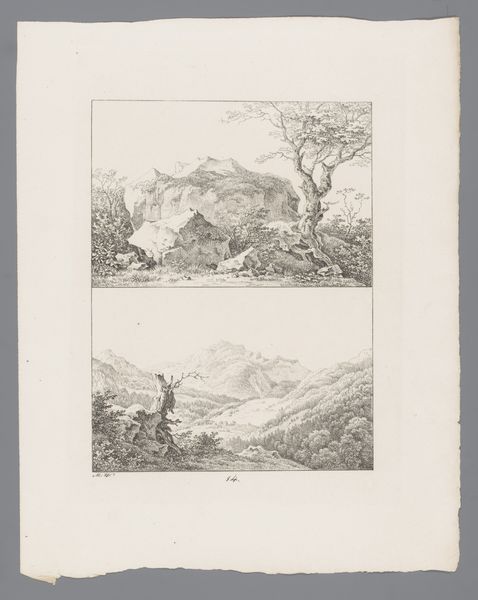
print, engraving
#
pencil drawn
#
toned paper
# print
#
pencil sketch
#
landscape
#
charcoal drawing
#
pencil drawing
#
romanticism
#
cityscape
#
engraving
Dimensions: height 356 mm, width mm
Copyright: Rijks Museum: Open Domain
Editor: So, here we have Jean-Baptiste Arnout's "Six Views of Subiaco and Tivoli," created between 1837 and 1856. They’re engravings, and it’s fascinating to see these almost postcard-like depictions. The detail achieved through the printmaking process is really striking. What strikes you most about this work? Curator: I’m immediately drawn to the reproductive labor involved. Think about it – the artist didn’t just create one image, but a matrix intended for *multiplication.* The shift from unique artwork to repeatable image drastically changes the artwork's accessibility and consumption. Look closely; notice the evenness of the ink distribution. Does this hint at an industrialized production process, or a more artisanal method? Editor: That's a good question. It seems very uniform, suggesting perhaps a more industrialized approach, right? This isn't a one-off, precious object but something designed to be widely distributed. What impact do you think that had? Curator: Mass production affects not just access, but also the perceived value. How does the *reproducibility* of these images shape our understanding of the depicted landscapes? Were these intended as tourist souvenirs, thus commodifying the "picturesque?" Considering that printmaking relies on skilled labour and a particular workshop set-up, how does its inherent materialism change its interpretation? Editor: I hadn't really considered the tourist aspect so directly. Thinking about it now, these could've been affordable mementos, fueling the popular taste for Romantic landscapes while supporting print workshops and paper mills. It is interesting how one might initially perceive a "romantic landscape" to have an intimate handmade touch but the lens of Materialism really turns our assumptions on their head, as we explore a history rooted in industrial activity and labour. Curator: Exactly. By focusing on the material conditions of the work—paper, ink, engraving, reproduction—we see beyond the image itself. Editor: It offers a really refreshing perspective on art production and value. Thanks!
Comments
No comments
Be the first to comment and join the conversation on the ultimate creative platform.
